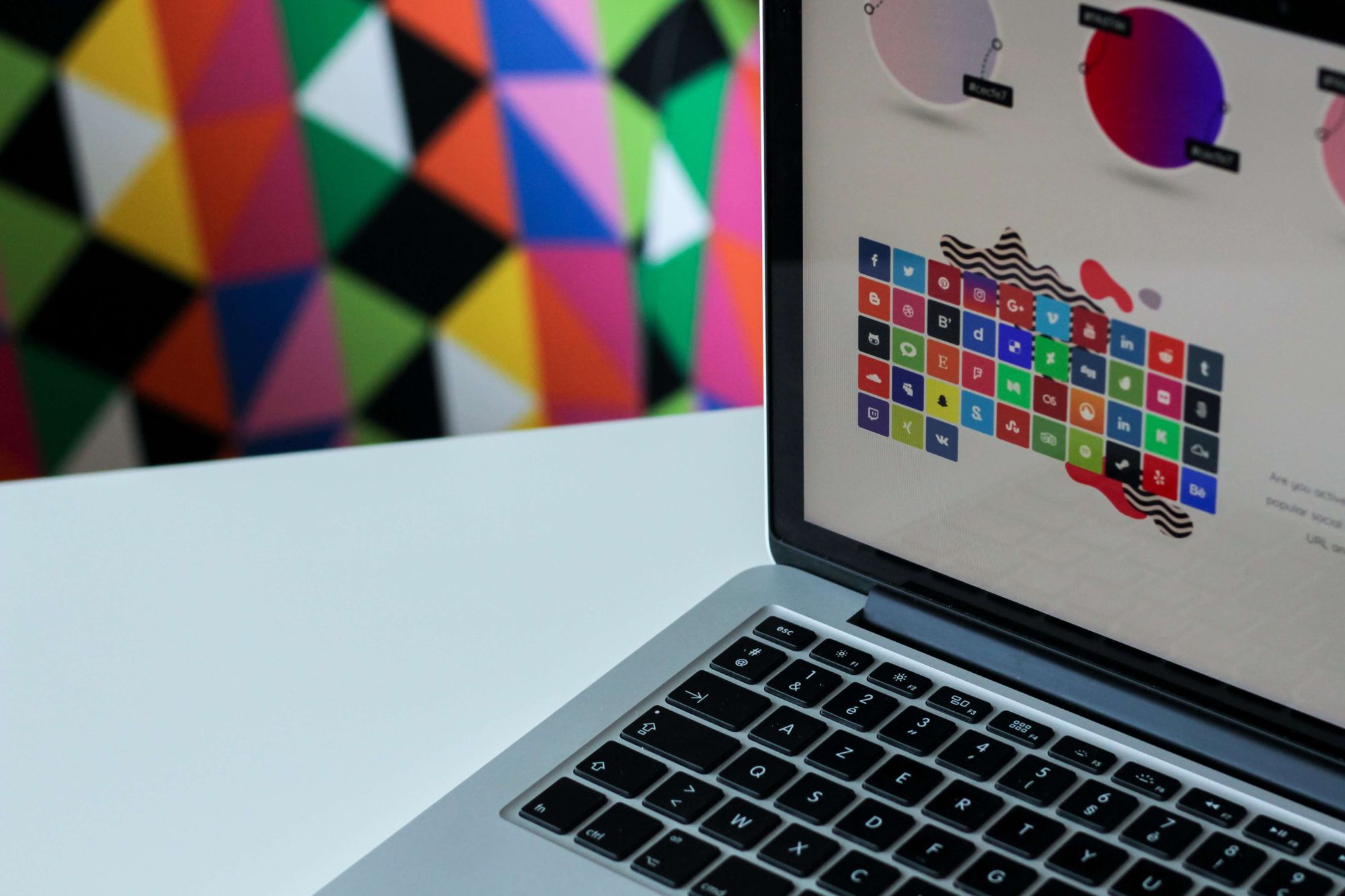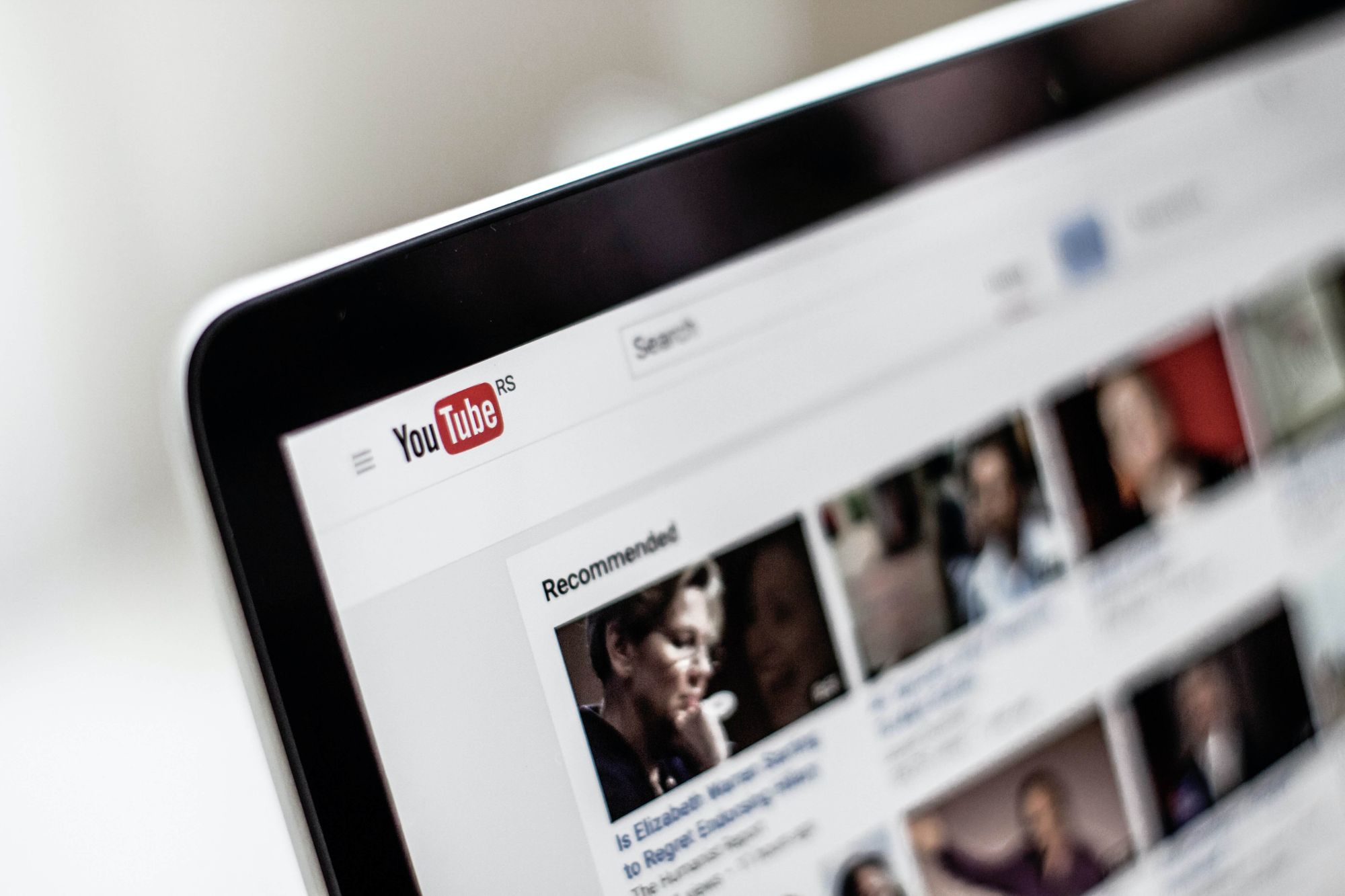A B2B marketing strategy is all about how a company gets the word out and sells its products to other businesses instead of regular, day-to-day consumers. The big idea behind this strategy is to charm potential business clients, develop close relationships with them, and turn them into loyal customers.
It's all about building those strong business relationships that make everyone happy.
In this guide, we’ll give you a comprehensive overview of the fundamentals of how to create a successful B2B marketing strategy. Including:
- Why is a B2B marketing strategy important?
- B2B marketing challenges
- B2B marketing KPIs
- How to measure B2B brand awareness
- Essential tools for B2B marketers
- Does social media marketing work in the B2B workplace?
- Making B2B marketing fun
- Going global with your B2B marketing
Why is a B2B marketing strategy important?
A B2B marketing strategy is essential for several different reasons. Let’s take a look at them, shall we?
Getting personal with businesses
Businesses have specific needs and pain points, and a well-crafted B2B marketing strategy allows you to tailor your messages to address those exact issues.
By understanding their challenges, you can position your products or services as the perfect solution. It's like talking directly to them, saying, "Hey, we get you, and we have just what you need!"
Relationship building
In the B2B world, companies want to work with other businesses they can trust. A solid marketing strategy helps you showcase your expertise, share valuable insights, and demonstrate your reliability.
When you consistently deliver on your promises and show that you're in it for the long haul, you're well on your way to becoming BFFs (business friends forever).

Leaving competitors in the dust
Competition can be fierce out there, but a well-crafted marketing strategy gives you the upper hand. You get to highlight what makes you special, why you're the best choice, and what sets you apart from the rest.
When potential clients see your expertise shining through and realize why you're the cream of the crop, they won't even think twice about picking you over the competition.
Getting your name out there
Imagine your business as a shining star, and your marketing strategy is the spotlight that puts you center stage. It's all about raising brand awareness and letting businesses know that you exist and, more importantly, what awesome stuff you offer. The more they see and hear about you, the more likely they are to remember you when it's time to make a decision.
Making it rain leads
Leads are like the seeds of future business relationships. Your marketing strategy is like a magic rain dance that attracts those potential clients to you.
You create engaging content, reach out on social media, and maybe even sprinkle in some targeted ads to make sure you catch their attention. And once you've got their interest, you nurture those leads with personalized emails and thoughtful follow-ups, leading them straight to the sale.
Consistency and cohesion
Picture your brand as a superhero with a distinctive logo and a powerful message. A consistent marketing strategy ensures that everything you do, say, or share is aligned with that brand identity. It's like giving your superhero cape a wash and making sure it always looks sharp.
When potential clients recognize your brand across different channels, it strengthens your presence and makes you instantly recognizable.


B2B marketing challenges
B2B marketing comes with its fair share of challenges that businesses need to navigate. First and foremost, reaching the right audience can be tricky. Identifying and targeting the specific businesses and decision-makers who are genuinely interested in your products or services requires thorough research and a well-defined strategy.
Also, the B2B buying process often involves multiple stakeholders with different needs and preferences, making it essential to tailor your messaging and content to address the concerns of each party involved.

Another significant challenge in B2B marketing is the longer sales cycle. Unlike B2C transactions, which can be relatively quick, B2B deals may take weeks or even months to close.
Building and nurturing relationships with potential clients over an extended period is crucial, and it demands consistent communication and engagement. Additionally, B2B purchases often involve substantial financial investments, leading to a more cautious and considered decision-making process.
Convincing businesses to make such high-stakes choices requires presenting a compelling value proposition and overcoming objections effectively. The complexity of products or services offered in the B2B space can further add to the challenge, as marketers must communicate technical details in a way that is easily understandable and relevant to their audience.
B2B marketing KPIs
Some key B2B marketing Key Performance Indicators (KPIs) include:
- Lead generation metrics: Number of leads, lead conversion rate, cost per lead.
- Website performance: Website traffic, bounce rate, time on site.
- Conversion metrics: Conversion rate, sales-qualified leads, opportunities created.
- Customer Acquisition Cost (CAC): Cost to acquire new customers.
- Return on Investment (ROI): Revenue generated compared to marketing expenses.
- Customer Lifetime Value (CLV): Predicted value of a customer over their lifetime.
- Email marketing metrics: Open rates, click-through rates, conversion rates.
- Social media engagement: Likes, shares, comments, follower growth.
- Content metrics: Content downloads, time spent on content, engagement metrics.
- Customer retention and loyalty: Customer churn rate, repeat purchase rate.

How to measure B2B brand awareness
Brand awareness is important in marketing as it allows you to understand how well potential customers know your company and products. If no one knows about your company or its services then no one can make a purchase.
It's especially important in B2B as three-quarters of B2B sales to new customers take at least 4 months to finish, with around half taking 7 months or more. Maintaining brand awareness throughout that entire process is essential to being top of mind and finalizing the sale.
Therefore, it’s important to measure brand awareness. But how do you do that?
Traffic
Traffic is the number of people visiting a site - the more people, the more traffic. There are a few different metrics involving traffic which will be explained below. But first, how do you track traffic?
The easiest way to track traffic to your website is using Google Analytics but you could also invest in other software.
Direct traffic
Your website is important to your marketing strategy, it allows people to see what you offer and how you can help their business - so you want people to check it out!
Direct traffic is when people directly (and intentionally) type (or copy and paste) your company’s URL in order to view your website. This is important as this means they were probably already aware of your company - they had to be to type in your URL. If your direct traffic is increasing then more people are aware of your brand.
Site traffic
Site traffic is similar to direct traffic but measures all visitors to your website. Visitors could be coming from your email marketing, social media, an article, or a keyword search. It's more difficult to work out where the traffic is coming from sometimes, but if your overall site traffic is increasing, more people are discovering your brand.
Blog traffic
Blogs are important in B2B marketing to provide knowledge to potential customers and stand out as a leader in your industry. And with 52% of buyers saying they are ‘definitely’ more likely to buy from a vendor after reading its content - you would hope buyers see your blog.
Blog traffic measures how many people click on your blog posts. This metric allows you to see how many people are reading your content - or at least who was interested enough to click. Most blog traffic usually comes from people sharing your articles on social media or email.
Search volume
Organic search volume allows you to see more detailed information about what people are searching to find your company. This metric tracks the number of times people search for your website, blog, or products and what keywords searchers are using to get there.
The more searches for your company or products, the more people are aware of your brand - and the more people find you from a keyword search the more people become aware (Plus, you know your SEO strategy is working. Win-win!).
A good starting point for tracking search volume and which keywords work best is Google Search Console. However, if you wanted more in-depth information you could use a tool to help.
Engagement
Engagement measures the impact of your brand’s presence on social media. It includes likes, comments, and shares. This metric allows you to see how many people are aware of your company and want to interact with it. Engagement can also show how interesting your content is to your audience.
Shares are particularly important as your content is, well, shared in other circles that you may not reach organically. This will further spread brand awareness (without extra investment from you!).
There are many tools to track engagement, but most social media sites (such as LinkedIn, Facebook, and Instagram) have tracking features built-in, allowing you to see how well your posts are doing in relation to each other. There are also a few websites that will allow you to see how many times your content has been shared.
Mentions
Mentions refer to any time your company is mentioned online. This could be in articles, tagged posts on social media, or using a unique hashtag relating to your company.
This metric tracks the ‘buzz’ around your brand. The more people talking about your company, the greater the brand awareness is. Ideally, you should try to separate media mentions and customer mentions.
You can set up Google Alerts or use social media management tools to track how often you’re mentioned and what people are saying about your business.
External links
External links are when people link your content on their website or blog (similar to sharing on social media). This will allow you to increase your reach and thus brand awareness, while also standing out as an authority in your industry.
This metric also helps to boost your ranking in the search results. External links (also called backlinks) do this by boosting the volume of visitors to your site which pushes you up the search results. And being higher in the search results will make it more likely that people click on your website.
Google Analytics can also help you to track external links.
Which metric is best?
So now you know a few different metrics for B2B brand awareness you may be asking yourself ‘which is best?’. To which the response is - that depends.
Every company has a slightly different definition of brand awareness and will have different goals. It’s important to clearly define brand awareness and the goals of your brand awareness campaign to pick the correct metrics.
Do you want to promote your website or blog? Traffic is a good metric to use. Do you want to promote your social media accounts? Try tracking engagement and consumer mentions. Do you just want people to be generally more aware of your brand? Track several metrics based on your campaign.
There’s no ‘one size fits all’ metric for brand awareness but by being, well, aware of your brand’s goals and types of metrics - you can effectively track your progress.
Essential tools for B2B marketers
B2B marketing is a pretty complex beast, with a lot of moving parts. That’s why there’s a huge industry out there producing valuable tools and technologies to help you get things done efficiently to a high standard.
With so much out there, it can be hard to work out what the essentials are when building up a martech stack.
Download your copy of the Tools of Choice report today to build a martech stack that crushes the competition. 🔥
That’s why we’ve picked out some of the essential types of marketing tools for B2B marketing, along with a selection of the most popular tools of that type currently on the market so you know where to look.
CRM
A CRM, or customer relationship management, is a system where you can track, administer and analyze your interactions with your leads and customers. This is pretty dang important in B2B marketing since almost half of sales cycles involving new customers can take up to 7 months.
B2B buyers will have on average 24 interactions with a B2B company as they progress from lead to customer, and you’d best believe you need to keep track of them!
Keeping track of customer interactions allows you to segment them based on different factors, such as company type or position in your marketing funnel, allowing you to personalize the marketing interactions you have with them. And if segmentation and personalization can increase conversion rates by 72%, any tool that can assist with this is a no-brainer.
The ability to track and analyze these interactions in one place is of equal importance. With such lengthy sales cycles and a large number of interactions, there are a lot of different stages where things can go wrong.
If you aren’t analyzing how successful you are at each interaction, you won’t know what you’re doing wrong and right. Meaning at best, you can’t improve things, and at worst, you’re wasting potentially months of time, resources, and money.
Popular CRMs
CMS
Content is pretty dang important to B2B marketing strategies. In fact, 78% of B2B marketers cite it as being an important part of their overall marketing strategy (making it the most cited form of marketing).
And it’s likely you’ll need a constant stream of content going out to satisfy the different needs of your company, in many different formats. So it’s lucky there’s an entire branch of software built around making sure it’s easy to get your content onto your website: CMS (content management system).
Without a CMS, creating a new page for a website requires the ability to write in code and various programming languages. But even if you have those skills yourself or within your organization, it’s not practical or efficient to have them create a new page from scratch for every piece of content you produce.
A good CMS makes it easy and simple to upload written content and images, and embed videos. You’ll be able to edit metadata, perform page optimization, and edit the URLs, all of which are important when it comes to SEO content. They’re an effective way to ensure consistency across all the different types of content on your site.
Popular CMS
Email marketing platforms
Email marketing might not be as flashy or high profile as other channels, but it’s a mainstay because it works: 59% of B2B marketers cite it as their top channel for revenue generation, mainly because it has an incredible ROI of 4,100%!
It’s not just a matter of sending out emails at random. There’s a lot to consider, including the design, timing, personalization, and more.
This would be easy to handle by yourself if you’re just infrequently emailing a few specific people. But an effective B2B email marketing strategy involves frequent emails of many different types to a large number of people, all in different stages of your marketing funnel.
You’ll need to keep track of how successful your different emails are. Without keeping track of the various KPIs important to your different email types, you won’t be able to improve and optimize!
That’s why good email marketing software is important. It allows you to do all of that on one handy, easy-to-use platform!
Social media scheduling tools
Social media is a powerful tool for B2B marketing. 55% of B2B buyers use social media for research, while a whopping 84% of CEOs and VPs use it to make purchasing decisions. It’s an essential tool in terms of content distribution, raising brand awareness, and generating leads.
But you need to make sure you’re posting at the right time to hit your ideal audience. This can be fairly easy if you’re marketing to people in the same timezone as you, as you can just hop on that channel at the right time of day to get it done.
But what if you have an international audience? No one wants to be getting up at 4 in the morning to send a tweet to reach your audience on the other side of the world!
That’s where a tool that allows you to schedule social media posts in advance comes in handy!
Many social media platforms have inbuilt scheduling tools, but it can be an advantage to have them consolidated on one platform, as it’s just easier to manage and coordinate your strategies across different platforms.
Popular social media scheduling tools
Project management tools
As we said at the start of this article, there are a lot of moving parts when it comes to B2B marketing. So you need a tool to keep track of them all, especially when they involve multiple people, teams, or even departments coordinating.
That’s where project management tools come into play. The best tools allow you to break down projects into different tasks, assign them to the correct people at the right times, and track progress. These tools have become even more important in recent times due to the increased prevalence of remote teams and working-from-home practices.
Popular project management tools
Workplace communication
Whether you’re in an office or working from home, having a handy way to speak to your colleagues is important, especially in B2B marketing, which so often involves collaboration between different people.
Having an effective means of communicating, that doesn’t necessarily require picking up a phone, or getting up and speaking to someone (which could force them to take time away from other tasks), is important. That’s just in an office setting, it’s absolutely essential when it comes to remote teams or colleagues working from home.
These platforms can take different forms, either as messenger style apps, or video conferencing/meeting systems. Many messenger apps also have video call features, but they might lack the robust features of dedicated platforms.
Popular workplace messenger apps
Popular video conferencing/meeting systems
Design tools
Even the most passionate copywriter has to admit that images and design are essential to B2B marketing. As such you’ll need some form of design tools. The complexity of the tool you’ll need will probably depend on your role in the company. Graphic designers will probably need full-blown professional tools (like Adobe), but others will probably be able to get by using browser-based tools (like Canva).
Popular design tools

SEO tools
Content marketers need access to something that will help them generating keywords for SEO purposes. While you could do it manually by scrawling through your competitor's content or speaking directly to customers, it's much more efficient to use a tool that will show you keywords and related terms.
However, they can be helpful tools for other B2B marketers, as they can be an effective means of doing market research. Many of the tools can tell you a lot about your target audience and brand position, helping you develop strategies as a result.
Popular SEO tools
Site analytics
It's pretty dang likely as B2B marketer that your brand will have a website. And it's likely you'll either be developing content for that site, or coming up with strategies to direct people towards that site.
But you'll need to keep track of what people do on the site once they're there. See what they're interested in terms of content. Measure what's generating the most conversions. Even see if your buttons are in the right place if UX is in your remit.
That's where analytics tools come in. Many tools will analyze how people move through your site, where they're coming from, and how long they're spending on each page. Some even have heat mapping tools, so you can see exactly where people are clicking and spending the most time on each individual page.
Popular analytics tools
Does social media marketing work in the B2B workplace?
Social media marketing totally works in the B2B workplace too. It's not just for regular folks; businesses can benefit big time.
Here's why: First off, it helps get the word out about your brand, so other businesses know you exist. You can share things like industry insights and expert knowledge, to show you know your stuff and gain trust.
Plus, it's a great way to find potential clients. You can create catchy ads or share interesting content to get their attention and make them want to work with you.
Social media lets you connect and chat directly with other businesses, which helps build relationships. Who knows? You might find awesome partners or collaborations.
But remember, B2B marketing needs a different approach. The decision-making process in businesses can take longer, and it involves more people. So, you have to focus on their specific needs and challenges in your posts and make sure you're giving them valuable insights.
If you do it right, B2B social media marketing can be a game-changer for your business growth.
How about building your YouTube video strategy? 👇

Making B2B marketing fun
If you were to run a random street survey about public perceptions of the differences between B2B and B2C marketing, they’d probably say “What the hell do those letters mean?” because not everyone works in marketing and knows the differences between them.
But once you’d explained the differences, they’d probably say something along the lines of “Business is serious, so marketing aimed at businesses needs to be serious too.”
Sadly there are lots of marketers who buy into this perception: B2C allows for more scope for creativity, fun, and humor, while B2B sticks to variations on sharing facts and figures.
But just because the discipline is business-to-business marketing, doesn’t mean humans aren’t involved, humans who like to laugh and be entertained are more likely to choose a company they enjoy over a boring one.
So, until the day that companies are being run entirely by computers and robots (and the timeline from Terminator was way off, so we’re safe… for now *dun, dun, duuuunnnnn*!), there's no harm in putting fun in your B2B marketing.
In fact, it can actually be a benefit:
- It’s attention-grabbing.
- It associates a positive emotion with the brand.
- If that positive emotion is strong enough, people will remember it for longer. For example, think of your favorite movies and you’ll remember the moments that generated the strongest emotions the most. Since we want a positive emotion, horror, and sadness are out, and if you’re trying to generate a romantic connection with your brand well… whatever floats your boat…
- If it’s funny enough, people will share it, increasing the reach even further.
All this, and it’s just more interesting for you to work on.
We’re not saying you should turn your entire marketing strategy into memes and cat videos. You have to take into account your audience, the product/solution you’re marketing, and the goal of the campaign.
Also, steer well clear of politics and recent tragedies (your personal humor might be dark but keep it out of your brand). Marketing a workplace messaging app to start-ups? Go ahead and make a joke about how they’ll be able to run a fantasy football league at work more easily.
Selling jet engines? Probably best to avoid a joke about a recent airplane disaster which could have been avoided if they’d fitted your engines. It’s best to err on the side of caution and keep things PC.
Going global with your B2B marketing
There’s a lot to take into consideration when taking your company international, and your marketing is a considerable part of it.
Just because you’ve had success in one country with certain strategies, it doesn’t mean you’ll have the same successes abroad.
We’ve put together some of the main factors you need to consider when conducting B2B marketing to international markets.
Know the rules
We’ll start with a short and sweet one: make sure you know the advertising and data protection laws of the country you’re marketing to!
Localize your language
First things first, you need to make sure you’re communicating in the right language for your international B2B marketing. English tends to be the language of business in large swathes of the world, but it’s not always the case, and you might have stronger successes if you can speak to people in their first language.
Even with the same language, there can be cultural differences in how it’s used in different countries. Take, for example, the differences between US and UK English.
Besides just the differences in spelling, there are plenty of idioms and cultural references that are unique to every country that speaks English. Even in countries where English isn’t the official or most common language but is the language of business, marketers might find themselves falling on different sides of the US/UK English divide. It can even vary depending on generation in some countries.
For example, China historically had English taught according to UK standards, but it has rapidly shifted to more American English as more and more Chinese nationals study in American universities and Chinese companies do business with America.
It can apply to different languages as well. The French spoken in France can be very different from that spoken in French-Canada, or French-speaking countries in Africa. The same with the Spanish spoken in Spain and Latin America, and the Portuguese between Portugal and Brazil, to name just a few examples.
Just like with the US/UK English split, it’s likely they’ll understand each other, but there are many cultural factors, idioms, and even pronunciations to consider for your international B2B marketing.
Brush up on the culture
Even once you’ve got the language nailed down, you’ll need to pay attention to cultural norms when it comes to business. A one-to-one translation might not always suffice, even if you’ve freed your copy and videos of idioms and references that might not translate.
You need to get to know how businesses operate in the international markets you’re targeting. How do people address each other? What degree of familiarity is permitted in the workplace? Knowing these sorts of things can help you establish the right tone of voice for your marketing.
You might also want to take a look at your design choices for particular markets. Certain symbols you might use, like in your logo could mean very different things in a different culture. The same with colors. For example, red is considered a warning color in Western cultures but is a color of happiness and good fortune in China.
These particular cultural differences are heavily considered in B2C international marketing, and while they perhaps matter less in B2B marketing, you might want to think about it if you want to make the best impression possible.
Follow their calendar, not yours
First up, make sure your digital marketing is arriving at the right time! You’ll need to keep track of the scheduling of social media posts and emails to make sure they’re arriving at the optimal times for your audience.
You’ll want to segment your audience geographically, and ideally have automation set up to make sure the posts and emails are going out at the right time (no one wants to be getting up at 4 am to send a tweet).
If a country has daylight savings, keep track of when that comes into effect as well. You don’t want to be missing key calls or marketing delivery times because their clocks have gone forwards/backward and yours haven’t!
When it comes to the calendar itself, every country has its own set of national holidays, and you should pay attention to them for international B2B marketing. Is it a good idea to put out a post or piece of content linked to that holiday? Better do your research in case that day has a degree of significance that would make it poor taste to do so.
If the majority of businesses are closed on that holiday, you might want to take a look at which channels you’re allocating your resources to. If no one’s in the office, they might not be paying attention to their work emails, but they might be posting and spending a lot of time on their personal social media, like Instagram.
Know where your audience is
We don’t just mean geographically, because, well, duh, they’re in the country you're marketing to. But what digital channels are they located on, and how do they use them? How do they conduct meetings? What industry-related events are they likely to be at?
In terms of digital channels, it can be obvious, like with China. Many Western social media channels are unavailable in mainland China, so you will need to utilize Chinese networks like WeChat and Weibo.
But even in countries where they’ve got access to the same channels as you, they might not utilize them in the same way. In Japan, for example, Twitter can be very different, simply because you can write a lot more with 280 characters using Japanese letters than you can with Latin letters.
You’ll also want to get to know how business proceeds. Do they value speed and efficiency, or do they take things slow and prefer to build relationships? Are their meetings formal and structured, or are they more relaxed? This can reflect the tone of voice and shape of the marketing they might respond well to.


